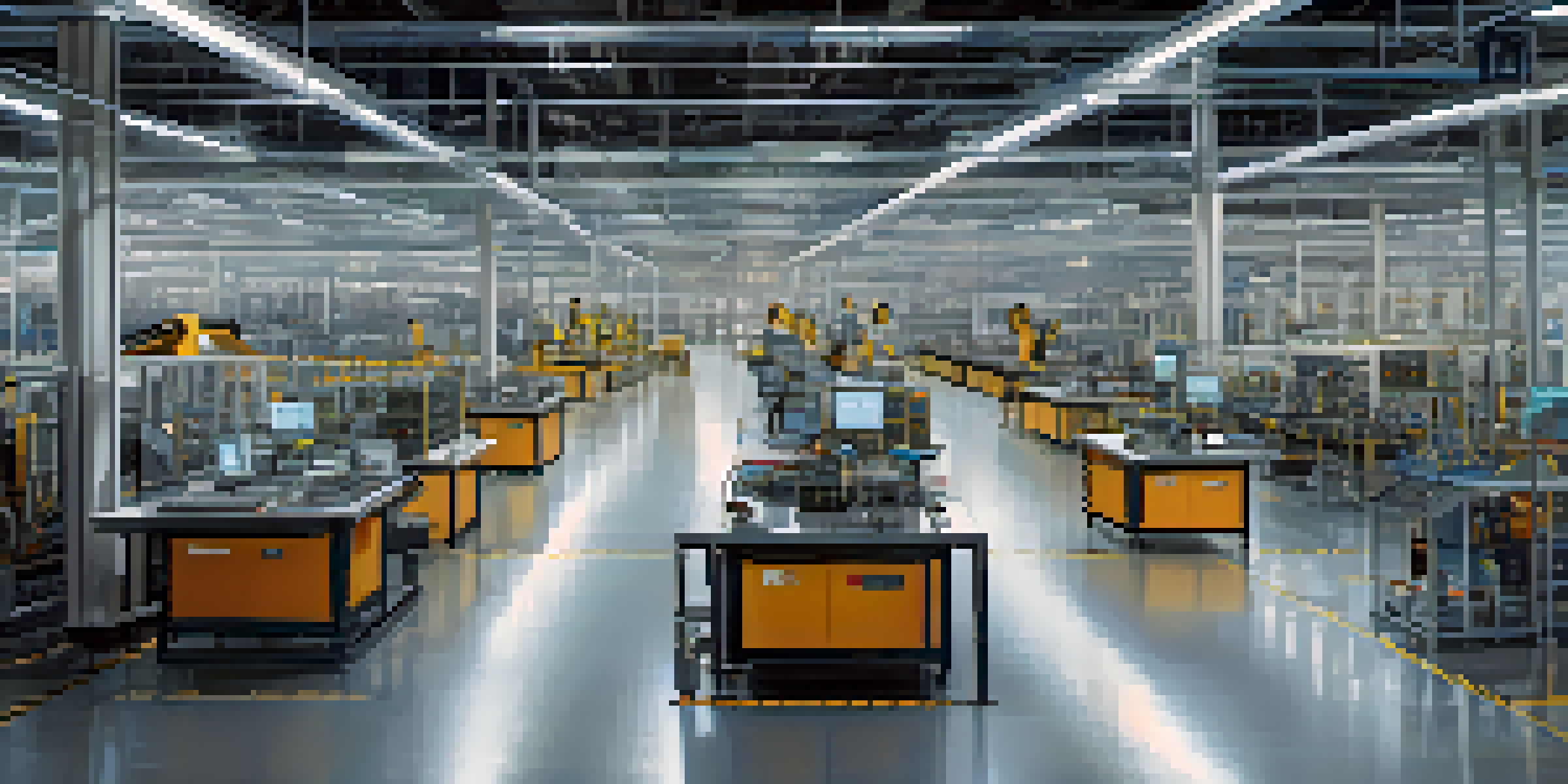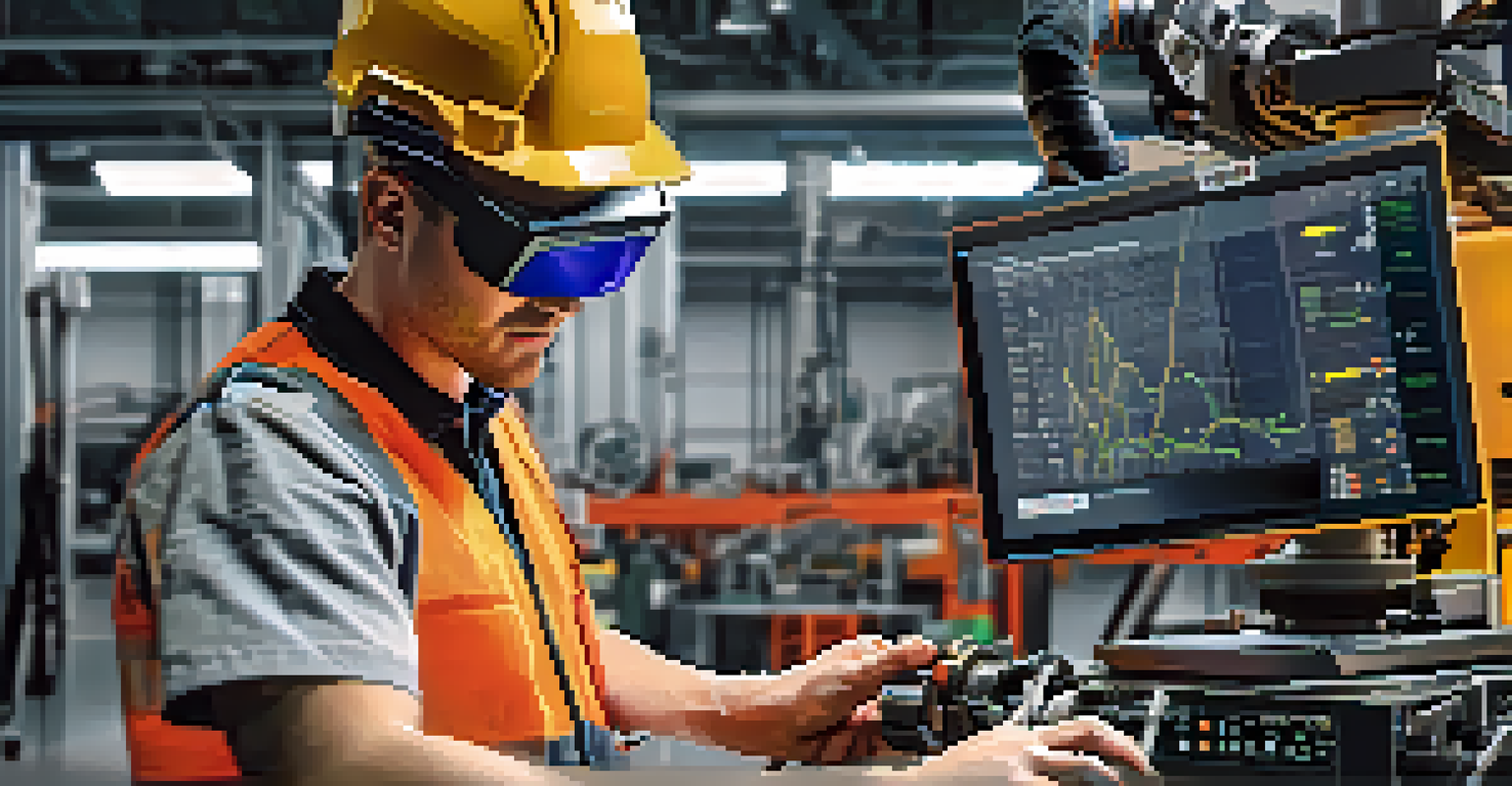Predictive Maintenance with Remote Monitoring Technologies

Understanding Predictive Maintenance and Its Importance
Predictive maintenance is a proactive approach that involves using data analysis tools and techniques to predict when equipment will fail. This method helps businesses avoid unexpected breakdowns, significantly reducing downtime. By understanding equipment conditions in real time, companies can schedule maintenance only when necessary, which saves both time and money.
An ounce of prevention is worth a pound of cure.
Imagine a scenario where a factory's machinery breaks down unexpectedly. Not only does this halt production, but it also incurs costly repairs and lost revenue. With predictive maintenance, businesses can monitor equipment health closely and intervene before issues escalate, ensuring a smoother operation.
The importance of predictive maintenance lies in its efficiency; it shifts the focus from reactive maintenance, which is often last-minute, to a more systematic, data-driven approach. This not only enhances the lifespan of the machinery but also optimizes resource allocation throughout the organization.
Remote Monitoring Technologies: The Backbone of Predictive Maintenance
Remote monitoring technologies play a crucial role in enabling predictive maintenance strategies. These technologies collect real-time data from equipment, which is then analyzed to detect anomalies and predict potential failures. By employing sensors and IoT devices, businesses can monitor their assets from anywhere, enhancing decision-making.

Consider a shipping company that uses remote monitoring to track the condition of its fleet. By analyzing data such as engine temperature and vibration levels, they can anticipate maintenance needs before a truck breaks down on the road. This proactive approach not only saves money but also improves customer satisfaction by ensuring timely deliveries.
Predictive Maintenance Reduces Downtime
By using data analysis to anticipate equipment failures, predictive maintenance helps businesses avoid unexpected breakdowns and costly interruptions.
With advancements in technology, remote monitoring systems have become more accessible and affordable for businesses of all sizes. This democratization of technology allows even small enterprises to leverage data insights, ensuring they remain competitive in their respective markets.
Key Benefits of Predictive Maintenance with Remote Monitoring
The integration of predictive maintenance with remote monitoring offers numerous benefits, such as reduced maintenance costs and improved equipment reliability. By catching issues early, companies can avoid the high costs associated with unplanned downtime and extensive repairs. This translates to significant cost savings over time.
The best way to predict the future is to invent it.
Another major benefit is enhanced operational efficiency. When machinery is well-maintained and operating at peak performance, production processes run smoothly. Think of it as keeping a car tuned up; regular checks and timely interventions ensure it runs without a hitch, avoiding those frustrating breakdowns.
Lastly, predictive maintenance contributes to better safety standards. By monitoring equipment health, companies can identify hazardous conditions before they lead to accidents. This not only protects employees but also fosters a culture of safety within the organization, which can boost morale and productivity.
Challenges in Implementing Predictive Maintenance
While the benefits are enticing, implementing predictive maintenance can come with its own set of challenges. One common hurdle is the initial investment required for technology and training. Businesses may hesitate to allocate budget towards new technologies without understanding their long-term ROI.
Moreover, integrating new systems with existing processes can be a complex task. Companies often face issues related to data compatibility, requiring time and effort to ensure that all systems work together seamlessly. This can lead to frustration if not managed properly.
Remote Monitoring Enhances Decision-Making
Leveraging remote monitoring technologies enables real-time data collection and analysis, allowing companies to address maintenance needs proactively.
Additionally, there’s the need for skilled personnel who can analyze the data collected from remote monitoring technologies. Without the right expertise, businesses may struggle to interpret the data effectively, which can hinder the predictive maintenance process and its intended benefits.
Best Practices for Successful Predictive Maintenance
To overcome the challenges associated with predictive maintenance, businesses should start by setting clear goals and expectations. Identifying specific outcomes, such as reduced downtime or improved safety, can help guide the implementation process. This clarity ensures everyone involved is on the same page.
Investing in training and development is also crucial. By equipping employees with the right skills to utilize remote monitoring technologies effectively, companies can maximize their investment. Think of it as teaching someone to fish rather than just giving them a fish; the long-term benefits are far greater.
Finally, companies should continuously review and refine their predictive maintenance strategies. By analyzing the results and gathering feedback, organizations can adapt their approach as needed, ensuring they stay ahead of potential issues and maintain optimal performance.
Future Trends in Predictive Maintenance
As technology continues to evolve, so too will the landscape of predictive maintenance. One exciting trend is the increasing use of artificial intelligence (AI) and machine learning, which can enhance data analysis capabilities. These technologies allow for more accurate predictions and faster response times, paving the way for even greater efficiencies.
Moreover, the integration of augmented reality (AR) could revolutionize maintenance practices. Imagine technicians using AR glasses to visualize equipment data in real time while they work, leading to quicker repairs and reduced errors. This fusion of technologies not only enhances maintenance but also improves training processes.
Training is Key for Successful Implementation
Investing in employee training ensures that businesses can effectively utilize predictive maintenance technologies and maximize their benefits.
Finally, the shift toward sustainability is likely to influence predictive maintenance practices. With a growing emphasis on eco-friendly operations, businesses will seek ways to minimize waste and energy consumption, making predictive maintenance an essential component in achieving these sustainability goals.
Conclusion: Embracing Predictive Maintenance for a Competitive Edge
In conclusion, predictive maintenance powered by remote monitoring technologies offers a robust solution for businesses looking to enhance efficiency and reduce costs. By adopting this proactive approach, companies can stay ahead of potential failures and optimize their operations. It’s not just about keeping the machines running; it’s about propelling the entire organization forward.
The journey toward successful predictive maintenance might have its challenges, but the rewards far outweigh the hurdles. With careful planning, proper training, and an eye on future trends, businesses can leverage the full potential of this innovative approach.

As we move into an increasingly data-driven world, embracing predictive maintenance will not only provide a competitive edge but also set the standard for operational excellence in the years to come.